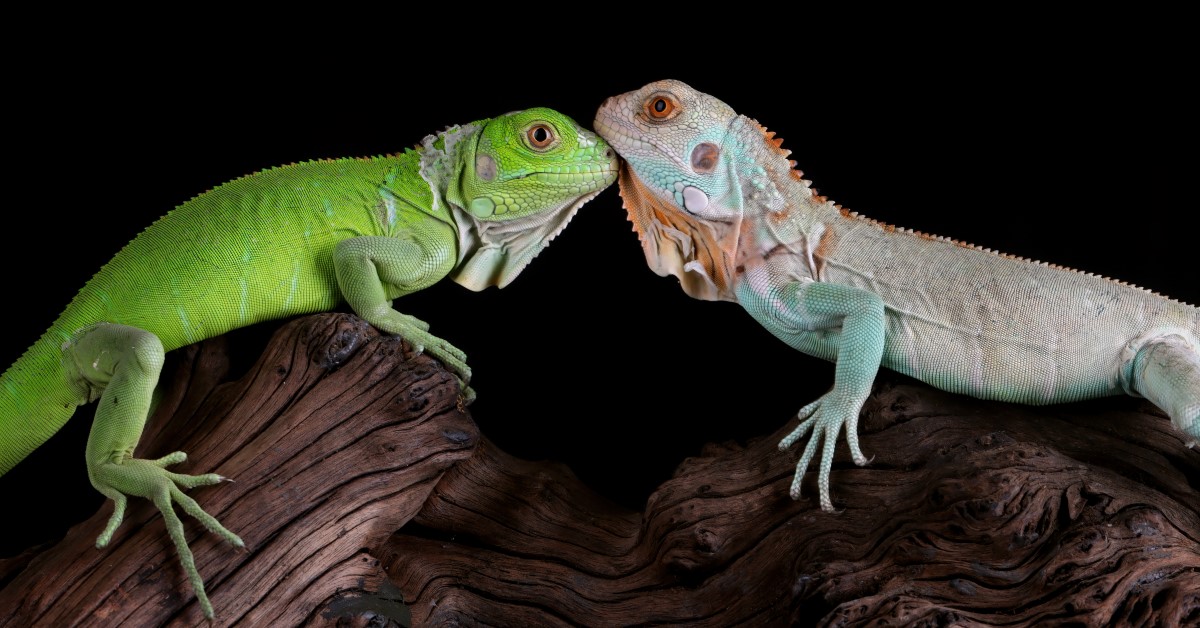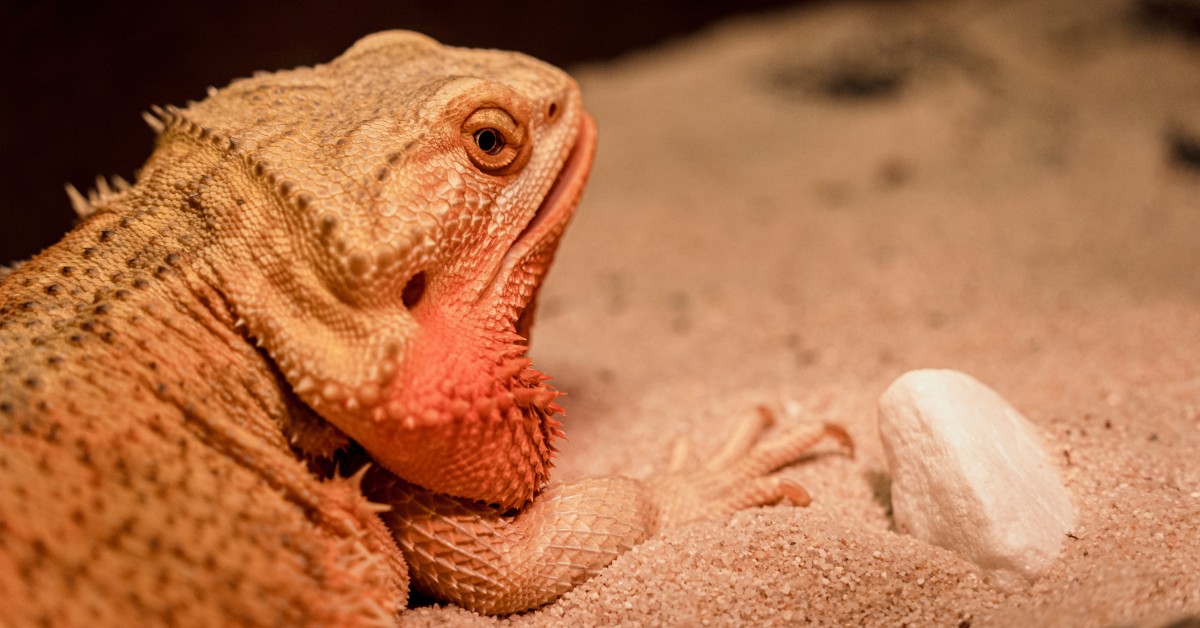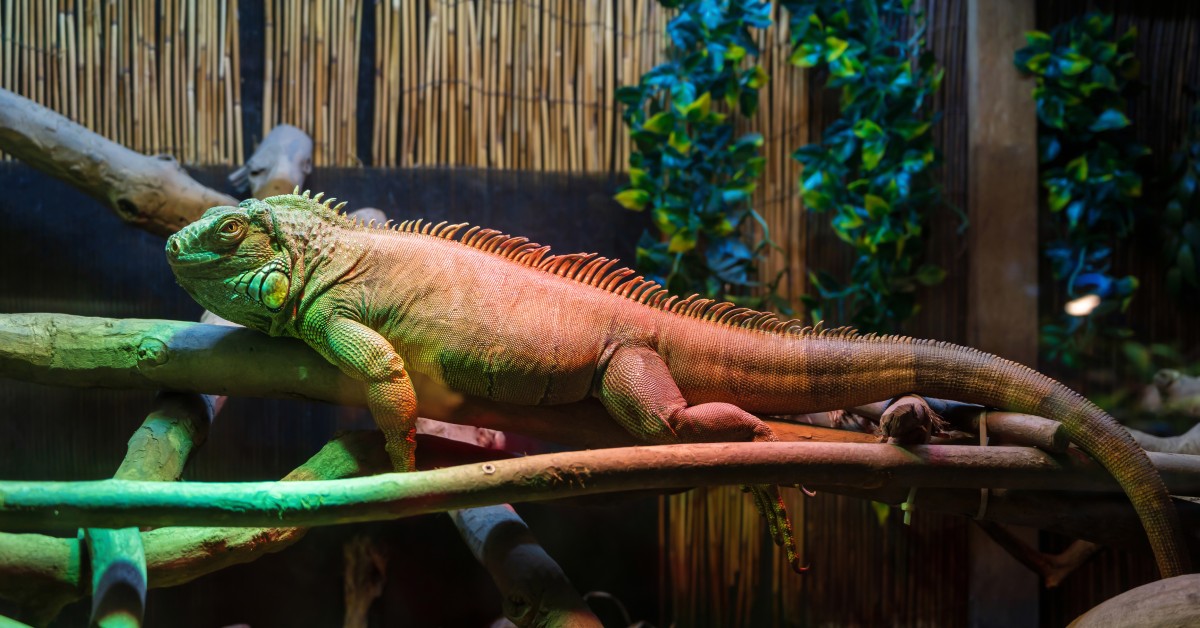10 Facts You Probably Didn’t Know About Iguanas
Iguanas can be interesting pets and companions when you come to understand their unique needs and behaviors.

If you’re looking for a new reptilian friend to add to your family, don’t overlook the fascinating iguana. Native to South and Central America, iguanas are sociable creatures that tend to live in groups. They range in color from yellow and gray to the familiar bright green, and can grow as long as six feet. Iguanas have strict feeding and housing requirements. However, they can be incredible pets if you take the time to tame these unusual reptiles. Before adopting a pet iguana, here’s some things you should know.
1. Iguanas Have a Long Lifespan
Iguanas live longer than most people realize. The average lifespan of an iguana is between 12 and 15 years. However, iguanas in captivity that are well-cared for can live up to 20 years or more. Some rarer species of iguana, such as the Grand Cayman blue iguana, can live between 20 and 40 years in the wild and up to 70 years in captivity.
2. Iguanas Have a Third Eye
On the top of an iguana’s head, you’ll find what is known as a “third eye.” This third eye looks like a pale scale but is able to sense movement and light. It allows iguanas to anticipate potential predatory birds that may swoop down from above. Unlike other vertebrate eyes that use cone or rod cells, the third eye detects danger with chemicals.
3. Iguanas Require UV Light to Maintain Health
While many people know that iguanas like it hot and require a basking zone of up to 90 degrees Fahrenheit, their love of warmth goes beyond comfort. Like many reptiles, iguanas require UV light. With adequate UV exposure, iguanas are able to absorb calcium from their food and ward off health conditions like metabolic bone disease. As the UV light spectrum can burn out, UV bulbs should be replaced every six months.
4. Iguanas are Excellent Swimmers
Many people are not aware of how well iguanas can swim. In fact, these reptiles often live around water in the wild and will swim to get away from predators. They can even stay underwater for a long time without breathing using their lungs. Most can stay underwater for up to 28 minutes before having to come up for a breath of air.
5. Iguanas Can Run Very Fast
Despite their short legs, iguanas can run fast. Some species of iguana, such as the black spiny-tailed iguana, are known to go as fast as 21 miles per hour. This unique characteristic was developed over time as the lizard had to find an effective way to evade its predators. In the wild, predators include snakes, owls, hawks, and cats.
6. Iguanas Love Vegetables
Have you ever considered what iguanas like to eat? As herbivores, they eat mostly fruits and vegetables in the wild. However, they do enjoy the occasional treat of a snail, insect, or bird’s egg. Unfortunately, eating animal protein can actually be harmful to their kidneys. Instead, they should be fed a variety of dark leafy greens, snap peas, carrots, peppers, squash, and small portions of fruit.
7. Iguanas Can Lose Their Tails
One of the most fascinating things about an iguana is its ability to drop its tail as a defense mechanism. In the wild, this would leave the detached tail in the mouth of the predator, giving the iguana time to get away. In younger iguanas, the tail can actually grow back. However, this regrowth is usually limited in size and color.
8. Iguanas Can Communicate With Each Other
If you have more than one iguana, it’s interesting to know that they can actually communicate with one another. While they don’t use verbal language, they can speak through head bobs and movements of the flaps found under their necks. Fast head bobbing could be a sign that the reptile is upset.
9. Iguanas Can Inflate Their Bodies
Have you ever seen a puffed-up iguana? These lizards are able to inflate their bodies to become floatable, often during floods. In fact, they can inflate their bodies to up to twice the normal size using their lungs as air reserves. They can also flatten their bodies to achieve maximum heat absorption while basking in the sun.
10. Iguana Stool Contains Salmonella Bacteria
All reptiles, including iguanas, have salmonella bacteria in their gastrointestinal tracts. While this bacterium does not cause harm to the reptile, it can harm individuals who come into contact with the lizard’s bacteria-ridden stool. This is why it’s important to use caution when cleaning a lizard’s tank, especially in homes with other pets and children.
Other Fun Facts About Iguanas
There’s much to know about iguanas and what makes them incredible pets. Did you know that a green iguana can survive a fall of up to 40 to 50 feet? As they tend to live in trees in the wild and are known for being quite clumsy, this is an important ability to have.
Many people are also unaware that iguanas are one of the most endangered animals in the world. Some species of iguana, such as the Galapagos pink land iguana, are extremely rare with fewer than 200 in existence. However, the best species of iguana for a beginner pet owner include the green iguana and the desert iguana.
Ready to start saving money on pet wellness care?
Then take a look at Mint Wellness, the pet wellness plan that provides fast reimbursement on routine pet care. Save on vaccinations, wellness exams, preventatives, dental, and more!
Learn More


